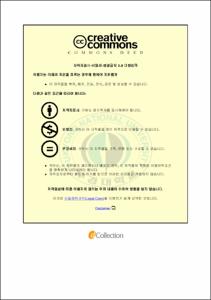고등학교 영어 교과서와 대학수학능력시험 외국어영역 듣기문항의 비교 분석
- Alternative Title
- A Comparative Analysis of the Listening Comprehension Tests Between Korean High School English Textbooks and Korean Scholastic Ability Tests
- Abstract
- A Comparative Analysis of the Listening Comprehension Tests Between Korean High School English Textbooks and Korean Scholastic Ability Tests
Abstract
The purpose of this study is to clarify the distinction of listening comprehension tests between Korean high school English textbooks and Korean Scholastic Ability Tests (KSAT). It is reported that the Ministry of Education, Science and Technology is going to increase the amount of listening tests from 34% at present to 50% in 2014. For this reason, it would be meaningful to compare how well the goals of the seventh revised curriculum's listening skills are reflected in both English textbooks and KSATs. The following research questions were raised: (1) How are the standards of the 7th national curriculum achieved in both high school textbooks and KSATs? (2) To what degree do the listening exercises in both the English textbooks and the KSATs compare with each other? (3) How well do the communication situations in the English textbooks weigh against those in the KSATs? (4) Is there any difference in the length of scripts between English textbooks and KSATs?
For this research, nine high school textbooks were selected according to their popularity. In KSAT, tests from 2001 to 2010 were selected as they are based on the 7th national curriculum. This data was analyzed on the basis of four criteria ― achievement standards, types of listening tasks, communication situations, and the length of scripts.
The overall findings are as follows: Firstly, with respect to the achievement standards, EnglishⅠ was the lowest graded subject that KSATs deal with. Only 13% of KSATs have been graded EnglishⅠ. Also, KSATs showed a special preference of the certain standards, which is 'to understand specific elements after listening to conversations with respect to diverse topics' and 'to make an inference either of previous contents or of following contents after listening to general conversations.' Second, on the whole, textbooks and KSAT tests corresponded with each other when it comes to types of listening tasks except only one element. The most frequent type in KSATs was 'to find an appropriate response after listening to certain conversation.' On the contrary, textbooks didn't cover the element as the main standard. Third, both textbooks and KSATs have been covering similar materials as their communication situations. Fourth, in respect of the length of scripts, two criteria were applied ― one was to count exchange times per conversation and the other was to count the number of words presented in every text. In the formal aspect, no other textbooks reached as the same exchange times as KSATs did. In the latter, only English Ⅰ of C textbook had an approximate number compared to KSATs.
From the results above, suggestions were provided for better connection between English textbooks and KSATs. First of all, KSATs have to be ready to want to make a certain change. Although textbooks tried to carry a great variety of types of listening tasks, students have no other opportunities to use them when KSATs only deal with limited types of tasks. If we are well aware that students' main concern is to get a high grade in their KSAT, it is necessary for KSAT to make a big change. Given that KSAT carries diverse types of tasks, students only have to follow it. Plus, textbooks need to design a longer script to make students adjust to the same circumstance as KSAT. At least, students need to have physically similar conditions with regard to the length of script to be heard.
- Issued Date
- 2010
- Awarded Date
- 2010. 8
- Type
- Dissertation
- Keyword
- 영어듣기 고등학교 영어교과서 수능 영어듣기
- Publisher
- 부경대학교
- Alternative Author(s)
- Son, Jong Seon
- Affiliation
- 교육대학원
- Department
- 교육대학원 영어교육전공
- Advisor
- 오준일
- Table Of Contents
- Ⅰ. 서론 1
1.1 연구의 필요성 및 목적 1
1.2 연구 문제 3
1.3 연구의 제한점 3
Ⅱ. 이론적 배경 5
2.1 듣기 5
2.1.1 듣기의 이해 및 중요성 5
2.1.2 듣기의 하위 능력 8
2.2 제 7차 고등학교 영어과 교육과정 11
2.2.1 영어과 교육과정의 성격 11
2.2.2 영어과 듣기 영역 성취기준13
2.2.3 듣기 영역 과업 유형 15
2.2.4 의사소통상황 및 소재 21
2.3 대학수학능력시험 외국어영역 23
2.4 선행연구 24
Ⅲ. 연구 방법 26
3.1 연구대상 26
3.2 분석 기준 27
3.2.1 성취 기준 27
3.2.2 과업 유형 28
3.2.3 의사소통상황 29
3.2.4 듣기자료의 길이 29
3.3 분석 자료수집 절차 및 방법 30
Ⅳ. 자료 분석 및 논의 32
4.1 성취 기준 분석 32
4.2 과업 유형 분석 46
4.3 의사소통상황 분석 51
4.4 듣기자료의 길이 분석 54
Ⅴ. 결론 및 제언 59
5.1 결론 59
5.2 제언 60
참고문헌 62
부록 67
- Degree
- Master
- Files in This Item:
-
-
Download
 고등학교 영어 교과서와 대학수학능력시험 외국어영역 듣기문항의 비교 분석.pdf
기타 데이터 / 1.2 MB / Adobe PDF
고등학교 영어 교과서와 대학수학능력시험 외국어영역 듣기문항의 비교 분석.pdf
기타 데이터 / 1.2 MB / Adobe PDF
-
Items in Repository are protected by copyright, with all rights reserved, unless otherwise indicated.